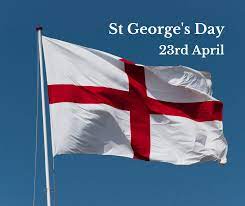
St. George became a legendary figure in English history due to his courage and bravery – however he never actually set foot in England. The country adopted him as its Patron Saint, with April 23 chosen as the date of celebration to mark his death. NRHS marked the day on the 21st April, the closest school day to the celebration, with some staff dressing in ‘red and white’ to mark the event.
Below are some facts (that you may not have known) about St. George, which the pupils learned about in their classes;
- ST. GEORGE WASN’T ENGLISH…
St. George might be hailed as a national hero, but he was actually born – in the 3rd century AD – more than 2,000 miles away in Cappadocia (modern day Turkey).
- AND HE WASN’T A KNIGHT EITHER
Although George is often depicted in popular culture as a knight in shining armour, it is more likely that he was an officer in the Roman army.
- ST. GEORGE WAS A MARTYR.
Like many Saints, St. George was described as a martyr after he died for his Christian faith. It is believed that St George was executed for refusing to make a sacrifice in honour of the pagan gods.
- AND HE NEVER VISITED ENGLAND.
Although St. George never visited England, his reputation for virtue and holiness spread across Europe and his feast day – the 23rd April – was celebrated in England from the 9th century onwards. He became popular with English kings. The St. George Cross was not used to represent England until the reign of Henry VIII.
To compliment St. Georges Day celebrations Key Stage 3 and Year 10 visited Central London to observe the ‘Changing of the Guards’ followed by a picnic in Hyde Park.
